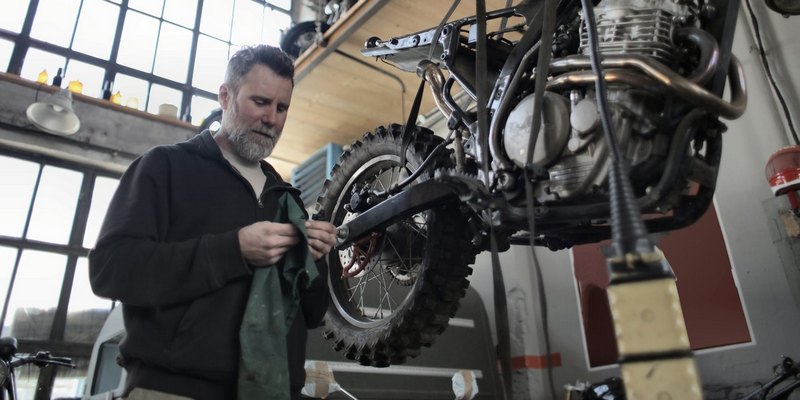Exploring the R3 Top Speed Potential

Within the domain of high-performance motorcycles, the Yamaha YZF-R3 emerges as an embodiment of engineering mastery and exacting artistry. With its resounding engine and sleek aerodynamic contours, every facet of the YZF-R3 is intricately crafted to bestow unmatched velocity and acceleration. Our discourse ventures into the core of this marvel, unraveling its capacity for peak speeds and acceleration finesse, thus illuminating the essence that renders the Yamaha YZF-R3 an undeniable powerhouse both on the asphalt and the circuit.
The Remarkable Entry of Yamaha into the Low-Capacity Sportbike Market
Despite a late start, Yamaha made a sensational entry into the low-capacity sportbike arena, which had already seen an influx of new models in the preceding decade. The company undoubtedly took notes from Kawasaki’s successful strategy with the Ninja 250 and Ninja 300 models and recognized a golden chance to join the bandwagon.
Yamaha’s Answer: Leveraging the Name of the Legendary ‘R’ Series
To make their mark, Yamaha drew upon the formidable reputation and popularity of their iconic ‘R’ series, famous for trailblazers like the R1 and R6. The company’s strategy revolved around introducing a motorcycle that, although it would sit at the entry-level of the ‘R’ series, would carry the same allure as its larger siblings in the family.
Yamaha Unveils the YZF-R3 in 2015: A Masterstroke
Yamaha made an explosive entrance into the sportbike sphere in 2015 by unveiling the YZF-R3. Despite its smaller size and lightweight frame, this two-cylinder bike was a powerhouse aimed squarely at dethroning the then reigning king of entry-level sports bikes – the Ninja 300.
The R3 and Its Larger Engine Capacity: A Winning Combo
The R3 stood out with its superior 321 cc parallel two-cylinder engine, easily outdoing the Ninja 300’s 296 cc capacity. Although the nominal increase in horsepower was only 3 hp, it also offered an extra 1.8 lb/ft of torque, giving it an edge over its competitor.
Yamaha’s Ingenious Strategy: More Power, Less Weight
In a brilliant move, Yamaha managed to pack more power into a lighter model. The R3 weighed in at a cool 167 kg dry, which was 7 kg lighter than the Ninja 300. This weight saving meant that even with a modest 42 hp, the R3 could deliver extraordinary straight-line performance, providing riders with an unbeatable blend of power and agility.
A Closer Look into the Power Dynamics of the YZF-R3
The Yamaha YZF-R3 possesses an impressive dyno curve and engine performance, turning heads with its noteworthy numbers. Boasting 37 horsepower at 10,500 rpm and 20 lb/ft of torque at 9,000 rpm at the rear wheels, it stakes a solid claim in the competitive world of 250-500 cc entry-level sportbikes.
These figures place the YZF-R3 squarely in the middle of its class. However, it is worth noting that while these digits are commendable, motorcycles from KTM’s 390 series have managed to achieve even more awe-inspiring performance metrics.
Harnessing the Symbiosis of Torque and Power in the YZF-R3
What makes Yamaha’s YZF-R3 stand out in its class is the clever engineering that keeps the peak torque and peak power in close proximity on the rpm scale. With only a 1,500 rpm difference, this configuration facilitates an optimized balance between power and control.
Here’s What You Need to Know About the YZF-R3’s Sweet Spot
There’s an enticing drive available from the YZF-R3 when revved at 7,000 rpm. This specific engine speed stands out as the sweet spot in the power curve. It is precisely this spot where riders will want to keep the engine buzzing for a sprightly ride or when they’re in the mood for a friendly chase down their favored roads.
Key Insights:
- The YZF-R3 is an undisputed contender in the 250-500 cc entry-level sportbikes class, with its laudable 37 hp and 20 lb/ft torque;
- It’s advisable to keep your YZF-R3 revved around 7,000 rpm for optimal power and performance;
- The close interplay of peak torque and peak power, with only a 1,500 rpm difference, sets up the YZF-R3 for an enviable balance of speed and control;
- Kudos to Yamaha for their strategic engineering approach, making the YZF-R3 a rider’s delight in its segment.
A Delve into the In-Gear Thrust Curve of the YZF-R3
The YZF-R3’s Performance On Lower Revs
Even at a speed lower than 7000 rpm under normal circumstances, the YZF-R3 exhibits an impressive drive. The engine displays a robust force from a mere 3500 rpm, continuing this momentum right until a shift in power occurs slightly above 6000 rpm. This ability to deliver impressive power even on lower revs, along with smooth transitioning, signifies the R3’s ideal suitability for both daily commuting and spirited rides.
Comparing YZF-R3’s Flexibility with Kawasaki’s Ninja 300
When the performance of Yamaha’s YZF-R3 is juxtaposed with that of Kawasaki’s Ninja 300, the former’s flexibility is apparent in most riding scenarios. This difference is especially significant in the second and third gears, and at speeds upwards of 6000 rpm in the remaining gears. This makes the R3 a versatile choice, capable of handling different riding conditions with ease, whether it’s urban commuting or high-speed highway cruising.
Observing Gearing Differences between the YZF-R3 and the Ninja 300
However, a noted difference between the YZF-R3 and the Ninja 300 is in their respective gearing. Yamaha’s YZF-R3 operates on longer gears compared to Kawasaki’s Ninja 300. This longer gearing slightly shadows the power and torque advantage that the R3 possesses, making it less apparent than one might expect. This, however, doesn’t impede the R3’s performance and simply points towards a different gear strategy adopted by Yamaha.
Key Insights:
- The YZF-R3 offers impressive in-gear thrust even below 7000 rpm, proving it to be a reliable sportbike across a wide range of rpm;
- Its flexibility and engine robustness, especially in the second and third gears, outshine the Ninja 300, making it a versatile bike for different riding scenarios;
- Although the R3’s longer gearing masks its power and torque advantage, this doesn’t impact its overall performance and is a reflection of Yamaha’s distinct gearing approach.
Probing the YZF-R3’s Acceleration Capabilities
Yamaha R3’s Checkered Flag Performance: Mid-Pack Excellence
The Yamaha R3’s straight-line performance is quite considerable, given its entry-level sportbike classification. While it may not be the quickest off the mark, its 0-60 mph time is still an impressive sub-six seconds, a story that reflects the capabilities of several 300cc motorcycles in this category.
Comparing the R3’s Speed with Entry-Level Automobiles
This achievement is notable when compared to mainstream entry-level cars like a Toyota Yaris, where the R3’s speed truly shines. With perfect launch conditions, the R3 can sprint from 0-60 mph in just 5.10 seconds, race to 80 mph in 8.73 seconds, and reach 100 mph in 17.13 seconds.
The Quarter-Mile Run: R3 Beats Ninja 300
In a quarter-mile race, the nimble R3 crosses the finish line in a flat 14 seconds, attaining a terminal speed of 95 mph and proving to be faster than one of its main competitors – Kawasaki’s Ninja 300.
The R3 vs Ninja 400: An Admirable Pursuit
Despite falling marginally short of its bigger sibling, the Ninja 400, which presently leads this class, the R3 showcases laudable resilience. It even manages to keep pace with the next class of motorcycles, such as Yamaha’s MT-07, indicating the R3’s immense potential.
The Surprising Revelation: R3 Outperforms the CBR650R
In an astonishing twist, the R3 – despite having just half the engine size – actually surpasses the restricted A2/LAMS CBR650R in terms of speed. This makes a compelling case for the R3’s commanding performance in the entry-level sportbike segment.
Key Insights:
- The Yamaha R3 excels in straight-line performance, offering sub-six second 0-60 mph times, comparable to several 300 cc motorcycles;
- Its quarter-mile run time beats the Ninja 300, emphasizing the R3’s capabilities even among competitors;
- Despite having just half the engine size, the R3 impressively outruns the A2/LAMS CBR650R, demonstrating its superior performance in the sportbike category.
The Yamaha YZF-R3: Top Speed Insights
Top Speed of the YZF-R3: A Thrilling 112 mph
The Yamaha R3, with a streamlined riding position, promises an adrenaline-pumping top speed of 112 mph. It’s essential to note that the R3’s power preservation varies from model to model beyond 11,000 rpm, which might slightly affect the stated top speed.

Potential Speed Boosts with Favourable Conditions
Under suitable environmental conditions such as a downward slope or a helpful tailwind, the YZF-R3 can stretch its speed even further, reaching a sensational 120 mph as the 6th gear hits the limiter.
Gear Shifting: Flexibility and Consistency
The YZF-R3 shows significant flexibility when it comes to gear shifting for best acceleration. Shifting gears between 10500 rpm and 12000 rpm will result in consistent acceleration times, making the sportbike incredibly rider-friendly.
Varying Acceleration Figures: Rider and Environmental Factors
Like most motorcycles with low cc and power, the R3’s acceleration can vary significantly, depending on various factors. A rider’s weight, as well as the direction and intensity of wind, can considerably influence the acceleration times. An additional 10 kg of weight or a surge of 10 mph in headwind can have substantial effects on acceleration, given the bike’s 40-horsepower engine. Read about the exhilarating journey to the pinnacle of speed with Yamaha’s R6. Unleash the power and thrill of R6 top speed!
The YZF-R3: A Gratifying First Sportbike
Anyone eyeing the YZF-R3 as their first dive into the world of sportbikes can rest assured of a joyous ride. Although it doesn’t champion the category for speed, the R3 is sure to bring a smile to your face, offering enough straight-line performance to make riding it a thrilling experience.
Key Insights:
- The YZF-R3 can sprint to a top speed of 112 mph under standard conditions and may reach up to 120 mph with favourable conditions;
- The bike’s acceleration can vary depending on the rider’s weight and the wind conditions;
- Even if it’s not the fastest in its category, the Yamaha YZF-R3 offers a thrilling and memorable first sportbike experience.
Yamaha YZF-R3 Acceleration Performance: From Zero to Top Speed
| Speed | Time |
|---|---|
| 0-10 mph | 0.57 seconds |
| 0-20 mph | 1.31 seconds |
| 0-30 mph | 1.98 seconds |
| 0-40 mph | 2.85 seconds |
| 0-50 mph | 3.93 seconds |
| 0-60 mph | 5.10 seconds |
| 0-70 mph | 6.82 seconds |
| 0-80 mph | 8.73 seconds |
| 0-90 mph | 11.83 seconds |
| 0-100 mph | 17.13 seconds |
| 0-110 mph | 30.677 seconds |
| SS/QM | 14.07 seconds / 95 mph |
| SS/KM | 26.926 seconds / 108 mph |
| SS/Mile | 39.087 seconds / 112 mph |
| Top Speed | 112.4 mph |
- SS/QM: Standing Start Quarter Mile;
- SS/KM: Standing Start Kilometer;
- SS/Mile: Standing Start Mile.
Conclusion
In conclusion, the Yamaha YZF-R3 epitomizes the pinnacle of high-performance motorcycle engineering, boasting unparalleled speed, acceleration, and precision craftsmanship. Its roaring engine and meticulously designed aerodynamics set it apart as a force to be reckoned with on both road and track. With its capabilities laid bare, the YZF-R3 stands as a testament to Yamaha’s commitment to pushing the boundaries of performance and delivering an exhilarating riding experience.
